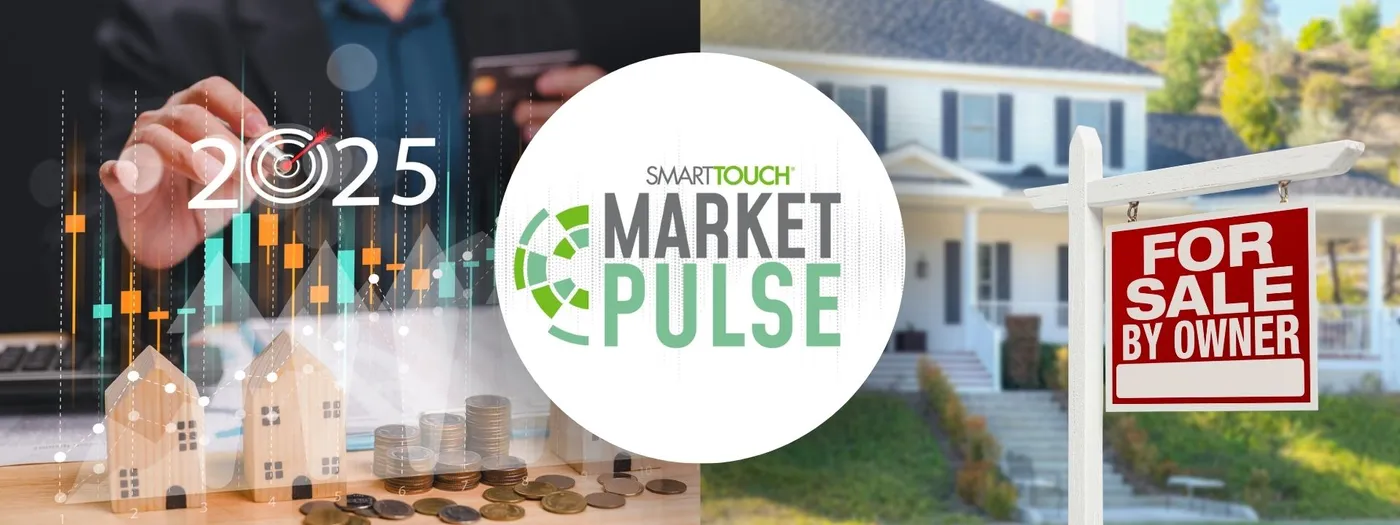2025 Housing Market Predictions with Mollie Carmichael & Zonda
The home buying journey has changed drastically in the past couple of years. From factors such as the pandemic to the elections, the home buying process is different. In Episode 26 of The Market Pulse, host Aaron Fichera speaks with Mollie Carmichael, Principal of Zonda, about the current state of the housing market, the impact of interest rates, and the demographic shifts affecting home buying. They explore the changing preferences of consumers, the impact of technology on the home buying process, and the challenges faced by builders and real estate agents.
Mollie Carmichael’s career path was influenced by mentors and a passion for home building. As the principal of Zonda, she combines her background in the masterplan world with her love for data. Zonda differentiates themselves through technology and data‑driven insights in real estate.
Current Housing Outlook
The current housing market presents a mix of challenges and opportunities, shaped by a range of economic factors. As Mollie points out, when the Biden administration took office, many were concerned about the economic fallout, particularly with unemployment rates. However, unemployment has remained relatively stable, staying under 5%. The real issue, according to Mollie, lies in the housing market, where interest rates have more than doubled, pushing house prices to an all‑time high. While mortgage debt is not as concerning due to 80% of consumers having rates under 5%, the new interest rates have made buying a home more difficult, with rates as high as 8% in November 2022 and current rates sitting at 5.9%. The resulting high rates have led to a stagnation in home sales, as many homeowners with favorable 3% interest rates are reluctant to sell and give up their low monthly payments. This has led to a drop in resale activity, but the new home market is adapting, with builders offering incentives and buy‑ins to meet shifting demand.

Despite these efforts, the housing market remains tight, especially in higher‑priced locations where equity is a driving force. Mollie explains how it is not the rates themselves that have caused the price hikes—rather, it is the market’s response to low rates from the past that inflated housing values.
Furthermore, incentives have become a crucial part of the equation, helping to offset the challenges of high interest rates and making it easier for buyers to get into homes. This is particularly significant for entry‑level buyers, who are largely absent from the market due to a lack of affordable options. As a result, the average age of homebuyers is now at 56, with many potential first‑time buyers unable to afford homes in the current market. In Mollie’s view, the key to navigating these challenges lies in paying down debt, addressing inflation, and ultimately bringing the market back into a balance where both buyers and sellers can find stability.
Changing Consumer Preferences
While inflation and government spending are key factors influencing the housing market, consumer preferences have also been shifting towards homes that offer functionality, as the pandemic changed how people use their homes. With people spending more time at home, certain home specs have become more popular. For example, with the increased popularity of work from home, consumers are now prioritizing having a separate office space.
New Presidency
With the new presidency, the top three questions in people’s minds when it comes to buying a home are; how much can I afford, who am I going with, and what are my options? Mollie predicts rates will be coming down in 2025 however she believes it will only be to around 5%. She also predicts GDP will increase but job growth will slightly decrease. Regarding homebuilding, Mollie sees an increase in supply costs due to tariffs, however, she notes builders are already preparing for those increases. One thing Mollie warns builders about however, is location. With many regions over performing and some underperforming, builders must be cautious of not growing a region too fast as it will lead to affordability issues.

Sustainability
Mollie also brings attention to the lack of regulation nationwide stating “it’s just too much red tape,” specifically with sustainability. While sustainability and technology are becoming essential in home design and construction, each state has their own regulations making the same size house two very different prices. These regulations affect the entry level homebuyer as it contributes to affordability issues.
Listen and Learn More
If you want to learn more about the 2025 housing market make sure to listen to Episode 26 of The Market Pulse, The Trump Effect: Explosive Housing Market and Changes Unveiled by Mollie Carmichael. Mollie dives deeper into housing market trends and how digital tools are transforming the home buying process, allowing buyers to conduct extensive research online before purchasing. Also make sure to tune into Mollie’s podcast, Inspirational Leadership with the Best in Home Building where she interviews housing industry experts to learn more about them and their journey into the housing industry.
